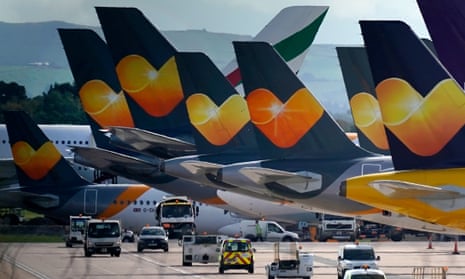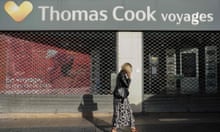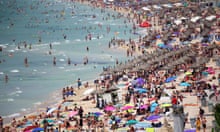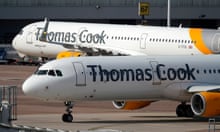In what turned out to be the last week of Thomas Cook’s 178-year history, while banks and creditors were still attempting to thrash out a rescue deal, civil servants were placing a multimillion-pound bet of their own. And their money was on the airline collapsing.
For the second time in the space of two years, the Civil Aviation Authority was secretly putting together its own pop-up airline, and this was even bigger than the last one, assembled to repatriate stranded Monarch passengers in 2017.
Some 150,000 Thomas Cook customers had flown abroad on holiday, many blissfully unaware that the return leg was in jeopardy. The CAA regulated Thomas Cook in two ways: through its airline operating certificate and its Atol licence, which guarantees customers their holiday should a firm go bust. Both involved scrutinising its finances for solvency. The Atol licence was due for renewal in two weeks. And the CAA had seen enough.
Hope of a rescue deal still officially remained: banks extending credit or even the government stepping in. But despite that hope, Operation Matterhorn was launched.
Discreet feelers had been put out for weeks, discussed under the Matterhorn codename to minimise the risk of leaks, to assess the availability of potential rescue aircraft. The grounding of the 737 Max posed an additional headache: other airlines were already using airline leasing firms to fill their schedules.
But the CAA had been here before, and honed its act. The rescue of XL Airways passengers after that went bust in 2008 wasn’t perfect – officials still joke about dodgy jumbos – but the blueprint has been clear since two Monarch operations: one in 2016 that was eventually not needed as the airline hung on for grim life, and then the successful repatriation when it collapsed a year later.
With non-disclosure agreements signed, and handling firms and airline operations teams sounded out in commercial confidence, CAA officials in the Canary Wharf HQ had laid out a plan for almost 50 planes to plug the gaps.
It would take at least 48 hours to get alternative aircraft into position to run the Thomas Cook schedule – and that meant paying out for an entire shadow operation even though the airline could, conceivably, still be taking passengers on Monday.
It also risked precipitating the very thing the CAA hoped to avoid: a collapse in consumer and investor confidence in the airline. In a world of flight-tracking website and social media, hopes for complete secrecy were faint once Matterhorn had kicked in.
“We monitor those sites,” said a CAA spokesman. “And on Friday afternoon I could already see a rumour forum talking about unusual flights in Malaysia, and someone said, [it] must be the CAA.”
But the alternative to shelling out millions on substitute planes now was for the first group of Thomas Cook passengers – some 16,000 were due to fly home daily – to be stranded until Wednesday or longer.
At a minimum, that would spell uncertainty and rack up hotel bills that the CAA – under Atol – would have to eventually cover. At worst, if passengers lacked accommodation, it could spell overcrowding in airports, panic and the spectre of public disorder.
The button was pressed and a comprehensive website of information, matching each doomed Thomas Cook inbound flight, set to go.
Volunteers at the CAA – many who had worked through the Monarch collapse in 2017 – were contacted individually on Sunday, and posted to Gatwick and other airports around the country for 2am on Monday, ready for the announcement of Thomas Cook’s liquidation. They were to stand ready to advise any passengers arriving for flights of the overnight news, their rights and how to obtain refunds for holidays that were not to happen.
The Foreign Office was meanwhile coordinating the discreet dispatch of staff to help at airports abroad – along with some Thomas Cook employees, still working for passengers without hope of a pay cheque.
On Sunday night, that Malaysia Airlines A380 touched down in Manchester, part of a worldwide safety net that had brought in charter planes from the US, Canada and Portugal.
Some of the contracting was straightforward: the likes of Titan Airways and Hi-Fly exist to regularly fill gaps in the scheduled airline market. They are extra planes, with pilots and crew, for hire by big names when circumstances demand.
Others also stepped in to the breach, exceptionally for Matterhorn: easyJet will devote one of its 14 A320s on standby for the rescue flights, while Virgin and BA made rows of transatlantic seats available for the CAA alone.
Far fewer planes will be needed next week, with no more outbound holidaymakers. The bureaucracy of dealing with tens of thousands of passengers complaints and cases through the Atol scheme is also averted.
Around 15,000, more than 90% of passengers, were due to fly home on Monday: a figure that keeps the CAA well placed for a steady, orderly, relatively cost-efficient repatriations and should vindicate its bet.










